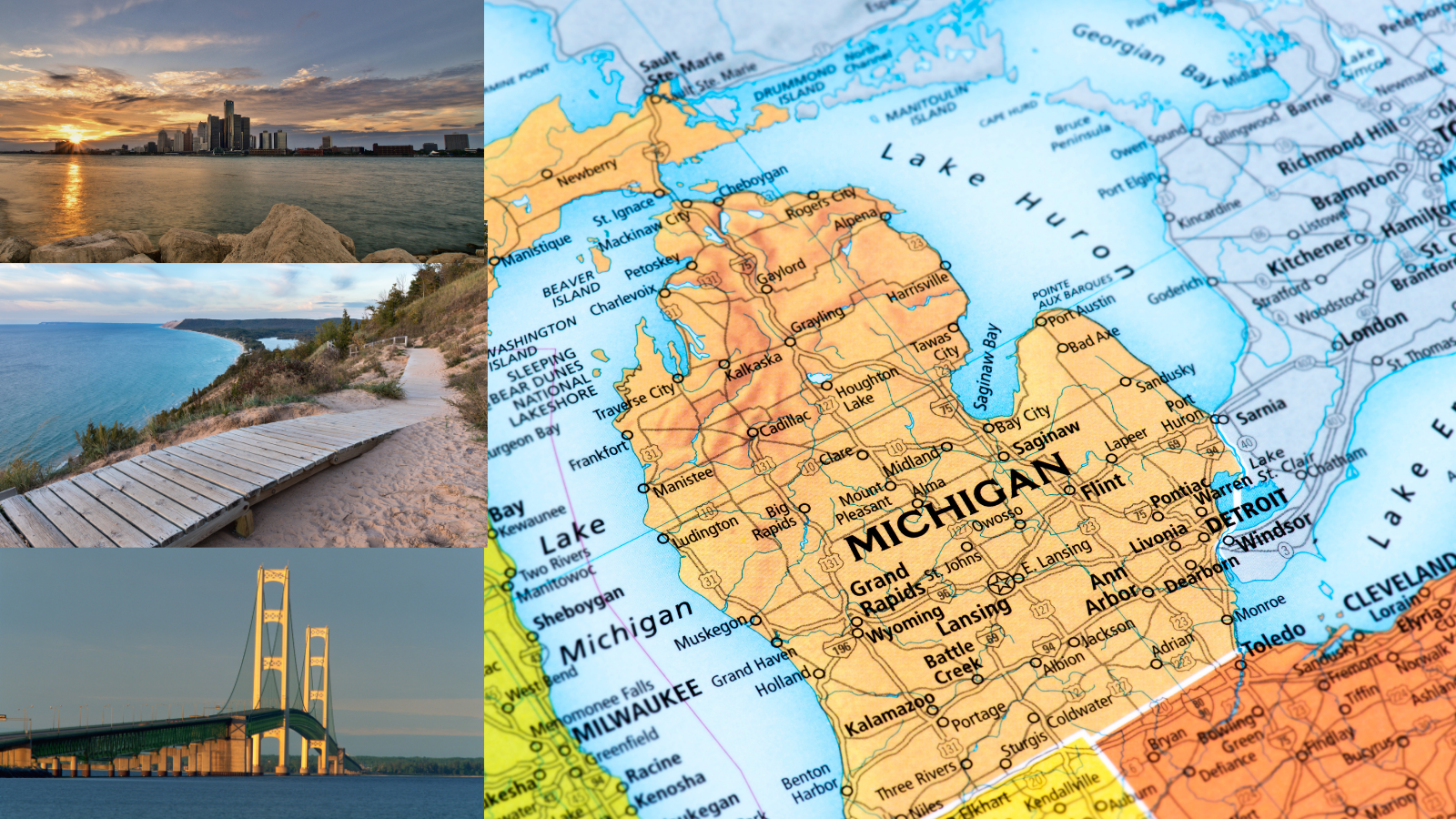How long do you think it takes to get across the state of Michigan, from bottom to top? The answer may be surprising.
If you were to enter Michigan from the southwest via 94 and traveled all the way to the tip of the Keweenaw Peninsula to Copper Harbor, you would have driven nearly 10 hours by the time you parked next to Lake Superior. If you were to come into the state through 23 or 75 on the Detroit side and make it all the way north to Copper Harbor, it would take you 10 hours exactly – if you took no breaks. You will have driven more than 600 miles.
Yes, Michigan is quite a state. It’s unique in that it’s spread across two unique peninsulas. It takes a lot of time to get from the southernmost point to the northernmost point, and there is no way you would drive straight through. Michigan is a destination state that is full of history and natural beauty, so you’ll undoubtedly make stops along the way.
On such a lengthy road trip, there are things you should do to better enjoy the ride as well as better protect you and your RV.
Safety
As always, safety first. Pack a roadside emergency kit and a first-aid kit, and make sure they are in an accessible location. Inspect your tires and the exterior of your RV, making fixes as you find them, prior to pulling out the driveway. Tell someone you trust that you will be going on a road trip, where you are going, how long you’ll be gone, if you’ll be making stops along the way, and when you expect to arrive at your destination. Let that person know when you’ve arrived or if you hit any snags. We’ve gotten very used to having phone and internet service anywhere we are, but you must remember that much of Michigan is rural and cell service for even the big providers can be spotty. Telling someone your plans ahead of time and checking in when you have reliable service, is another safeguard to keeping you and your passengers safe.
Pack snacks and drinks
A drive that takes one or two days will require quite a few snacks and beverages. Pack as many items as you can so that you don’t need to make many unplanned stops or have to walk into a busy convenience store. Bring lunch supplies, so that you can eat at least one meal on the road. Also, try to do some grocery shopping prior to leaving so that you at least have dinner and breakfast for the next morning handled. Know the location of the nearest grocery store to your campsite, so that you can pick up the rest of the supplies locally and avoid from adding weight to your RV.
Stop every 2-4 hours
Most people just want to get in and drive… and drive as far as they can without stopping. However, it’s a good idea to purposefully stop so that you can stretch your legs or even get a little exercise. This helps us physically as well as mentally, and you need to be sharp to drive an RV safely. Pushing it can lead to exhaustion, and sitting too long in a vehicle can cause aches and pains that will make your camping vacation less enjoyable. Plan your route, and make stops every few hours at a point of interest (check out our regional driving tours for lots of ideas) or to coincide with a meal that can be enjoyed at a picnic table.
Be flexible
Even though you should have your route planned as well as many of the stops, one of the benefits of traveling and vacationing in an RV is that you can change your plans. You can be flexible and yet still comfortable. An RV inherently invites you slow down and observe and appreciate your surroundings. It’s not just a way to get from point A to point B. If the dog needs to go out, or the kids need to run around, or you see a sign for a lighthouse or a hiking trail, or there’s a roadside stand, you can stop at your leisure.
Gas up
We all know that gas mileage isn’t pretty when you’re towing or driving an RV. We also know that even though there are lots of places to stop for gas, there are some pretty long stretches between them. Make sure you’re never lower than half a tank of gas. This gives you wiggle room in case you get off course or make a spontaneous detour. There is no chance you’ll be in the middle of nowhere and running on empty.
Try not to drive past dark
For one thing, there is a lot of wildlife in Michigan, and deer are notorious for making an appearance at dusk. For another, it’s a practice in safety to reach a new destination for the first time, especially if you’ll be pulling in with an RV, when it’s still daylight. This way, you can make sure the campsite is okay and you can make camp without the nuisance of needing a headlamp or flashlight to check items off your list.

